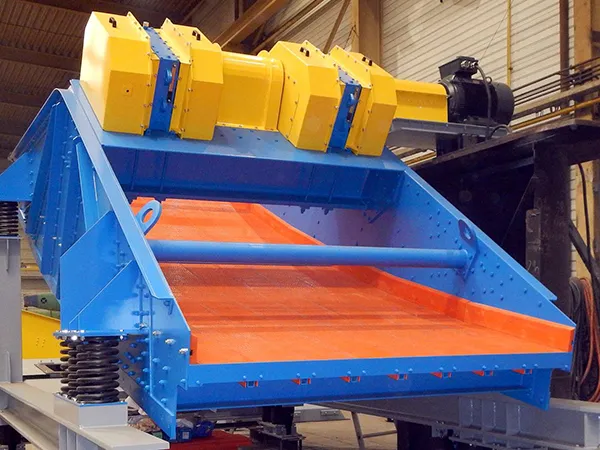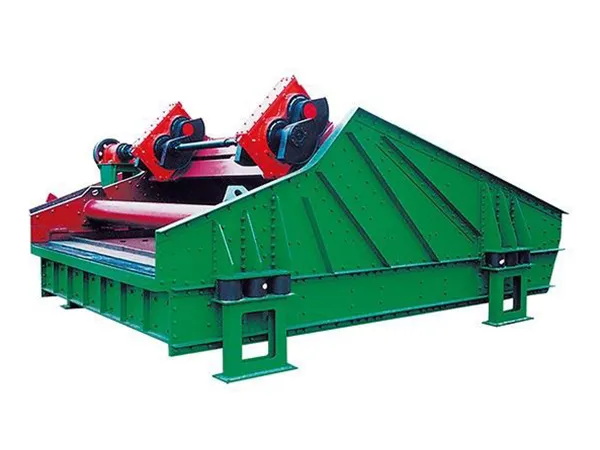What are the maintenance tips for vibrating screens?
Vibrating screens play a vital role in many industries, including mining, construction, metallurgy, and recycling. These machines ensure efficient material separation and improve productivity. However, like any heavy-duty equipment, vibrating screens require regular maintenance to operate at peak performance and avoid unexpected breakdowns. Proper maintenance not only extends the machine’s lifespan but also ensures safety and minimizes downtime. In this guide, we’ll share practical vibrating screen maintenance tips to help you keep your equipment running smoothly and efficiently.Maintaining vibrating screens effectively is crucial for ensuring optimal performance, maximizing lifespan, and preventing costly downtime.
Vibrating Screen Maintenance Tips

I. Daily / Per Shift Checks (Visual & Auditory):
Listen for Abnormal Noises: Pay attention to any unusual grinding, knocking, rattling, or high-pitched sounds coming from the bearings, motor, or structure.
Observe Vibration: Check for smooth, consistent vibration across the entire screen deck. Look for erratic movement, shaking, or excessive bouncing, which could indicate imbalance, broken springs, or structural issues.
Check Material Flow: Ensure material is feeding evenly onto the screen and discharging properly. Look for build-up on side plates, feed boxes, or discharge lips.
Check for blinding (screen openings clogged) or pegging (near-size particles stuck).
Visual Scan for Obvious Damage: Quickly look for loose bolts, cracked welds (especially near high-stress areas), obvious holes or tears in the screen media, and damaged spray nozzles (if applicable).
Check Surrounding Area: Look for excessive spillage or dust, which might indicate worn seals or enclosure issues. Ensure walkways and access points are clear.
II. Weekly / Regular Inspections (More Detailed):
Screen Media Inspection (Crucial!):
Tension: Ensure screen panels (especially wire mesh) are properly tensioned. Loose screens wear out quickly, perform poorly, and can damage the screen box.
Check tensioning bolts/clamps.
Wear & Damage: Inspect for broken wires, tears, holes, excessive wear, or deformation in wire mesh, polyurethane, or rubber panels. Note wear patterns – uneven wear might indicate feed issues.
Blinding/Pegging: Check closely for clogged openings. If persistent, investigate the cause (moisture, particle shape, wrong opening size).
Clamping System: Inspect clamp bars, J-bolts, wedges, and associated hardware for wear, damage, or looseness. Ensure they are securing the media effectively.
Vibrator / Exciter Mechanism:
Bearing Temperature: Safely check bearing housing temperatures (using an IR temp gun is ideal). Compare readings over time and between bearings. A significant increase indicates potential problems.
Lubrication Levels (Oil): Check sight glasses for correct oil levels. Look for leaks around seals.
Grease Points: Check for signs of fresh grease purging (if grease lubricated) indicating proper lubrication. Clean excess old grease.
Mounting Bolts: Verify that the bolts securing the vibrator mechanism to the screen box are tight.
Drive System:
V-Belts: Check tension (not too tight, not too loose), wear (cracks, glazing), and alignment. Misaligned belts wear quickly and waste energy.
Drive Motor: Listen for bearing noise. Check mounting bolts. Ensure cooling fins are relatively clean.
Guards: Ensure all drive guards are securely in place.
Support Structure & Springs:
Springs (Coil or Rubber): Inspect for cracks, breakage, sagging, or deformation. Ensure the screen is sitting level.
Support Structure: Perform a more thorough check for cracks in welds or structural members, especially around spring mounts and support points. Check mounting bolts securing the screen to the structure.
Fasteners: Check the tightness of key bolts, particularly those holding the screen media, vibrator mechanism, side plates, and support structure connections. Use torque wrenches where specified.
III. Scheduled Preventive Maintenance (Monthly/Quarterly/Annually – Follow Manufacturer’s Recommendations):

Lubrication (Vital!):
Follow the Manual: Adhere strictly to the manufacturer’s specifications for lubricant type (oil or grease), quantity, and frequency.
Greasing: Use the correct grease type. Do not over-grease bearings, as this can cause overheating. Purge old grease if recommended.
Oil Changes: Change oil at recommended intervals. Check for contaminants (water, metal particles) in the old oil.
…
For more detailed information on vibrating screen maintenance tips, please click here: https://www.zexciter.com/en/a/news/vibrating-screen-maintenance-tips.html


